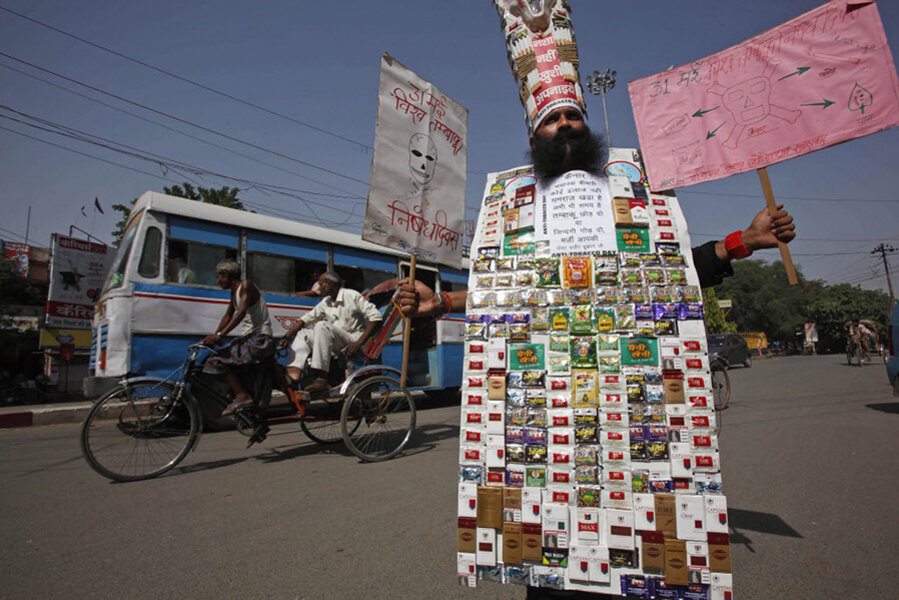Why cigarettes in India and Europe must carry bigger warning labels
Loading...
A move toward larger warning labels on cigarettes and stricter regulations is moving forward, as courts in India and the European Union struck a blow Wednesday against legal challenges filed by the tobacco industry.
The Indian Supreme Court said new rules introduced April 1 that require health warnings to cover 85 percent of a cigarette pack's surface could go forward, rejecting a plea from industry groups. Previously, the labels had covered 40 percent of the front of a pack.
"You have a duty towards the society," judges from the high court told tobacco industry lawyers in a New Delhi courtroom, rejecting the industry's appeal to extend a temporary stay it obtained from a court in Karnataka. Smoking causes about 1 million deaths every year in India, according to research from the journal BMJ Global Health.
On Wednesday, the European Court of Justice also rejected industry groups' challenge to stricter regulations that included requiring bigger warning labels; banning menthol, a popular cigarette flavor; new limits on e-cigarettes; and allows countries to mandate plain packaging, without companies' distinctive fonts and images.
The court rulings underscore a worldwide effort to remind consumers of the dangers of smoking, at times in graphic terms.
In the United States, the Food and Drug Administration proposed warnings that included color images such as a man exhaling cigarette smoke though a tracheotomy hole in his throat, but a federal court struck them down in 2012 amid industry objections, sending the regulator back to the drawing board. Since the 1980s, cigarettes sold in the US have carried text-based labels.
But outside the US, the vivid warnings have been gaining ground. India's and Thailand's warnings will be the strictest around the globe, Reuters reports. In Europe, the warnings would cover 50 percent of the package.
The rulings represent a larger blow to the tobacco industry, which has argued that the existing warning labels in India are enough of a deterrent and that the European rules represent government over-reach.
"Today's judgment is specific to detailed aspects of EU law, and reflects the substantial deference that the Court of Justice often shows to the EU institutions when reviewing EU legislation," Marc Firestone, the senior general counsel for Phillip Morris International, said in a statement. He said the court also wasn't weighing in on whether a move towards so-called plain packaging – without corporate logos or advertisements – was legal.
"The excessively large 85 percent warnings will have a severe impact on the livelihood of farmers and other industry stakeholders by providing a huge boost to the illegal cigarette trade in the country," the Tobacco Institute of India, an industry lobbying group, says on its website.
Picture-based warnings have been found to be much more effective than text-based warnings, particularly in terms of encouraging people not to start smoking or quit smoking. Someone who smoked a pack a day would see information on the pack an estimated 7,300 times each year, according to a study published in the journal Tobacco Control.
In the US, however, the FDA's warnings were stymied by a changing attitude toward regulating commercial speech under the First Amendment, notes David Orentlicher, a physician and professor at Indiana University's School of Law.
"Companies today are better able to promote their products, and government is less able to promote health than was the case in the past," he wrote in the New England Journal of Medicine in 2013. "Today ... courts are using the First Amendment to the detriment of consumers' welfare, by invalidating laws that would protect the public health."







